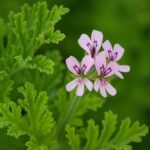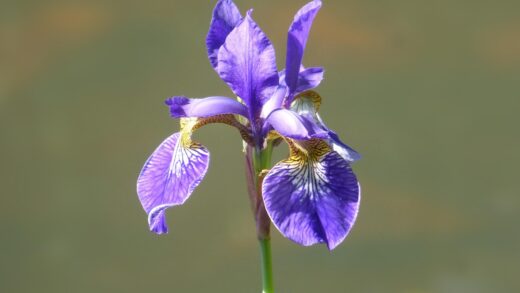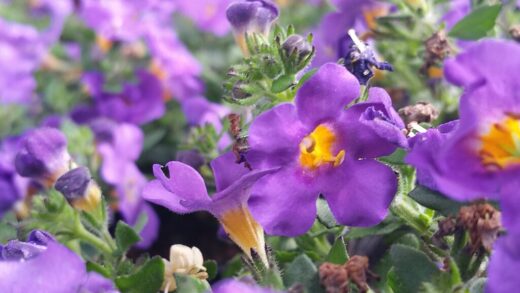Choosing the right time and place
The success of establishing a thriving colony of English bluebells begins long before the first bulb is placed in the ground; it starts with meticulous planning regarding timing and location. The optimal time to plant English bluebell bulbs is in the autumn, typically from September to November. Planting during this window allows the bulbs to establish a robust root system throughout the cooler, moist months before the ground freezes. This crucial period of root development ensures that the plants are well-anchored and ready for vigorous top growth as soon as the soil warms in the spring. While it is possible to plant them in early spring, autumn planting consistently yields better results and more impressive first-year flowering.
Selecting the perfect location is just as critical as the timing. English bluebells are quintessential woodland plants, and they flourish in conditions that mimic this natural environment. Look for a spot in your garden that offers dappled shade, especially protection from the intense sun of a summer afternoon. The ideal scenario is planting beneath deciduous trees or large shrubs. This arrangement naturally provides sunlight in the early spring when the bluebells are in full leaf and flower, as the tree canopy has not yet filled out. As summer progresses and the canopy becomes dense, the now-dormant bulbs are shielded from the heat and dry conditions, perfectly replicating their native lifecycle.
The character of the soil in your chosen location is a paramount consideration. Bluebells demand a soil that is rich in organic matter, consistently moist, yet free-draining. They will not tolerate soils that are either perpetually waterlogged or excessively dry. Before planting, take the time to assess and amend your soil. If you have heavy clay, improve its structure and drainage by incorporating horticultural grit and copious amounts of compost or leaf mould. For sandy soils that drain too quickly, the addition of organic matter is equally vital to enhance its capacity to retain the moisture the bulbs need during their growing season.
Finally, consider the long-term vision for your bluebell planting. These plants are at their most breathtaking when grown in large, naturalistic drifts rather than in small, isolated clumps. When choosing your site, think about where they will have room to spread and naturalize over the years. Planting them along the edge of a woodland area, in an informal border, or scattered throughout a lawn that can be left unmown in spring will create a truly magical effect. Planning for this future spread from the outset will prevent them from becoming crowded or encroaching on other plants where they are not wanted.
The art of planting bulbs
The physical act of planting English bluebell bulbs requires a gentle touch and attention to detail to ensure they get the best possible start. The bulbs themselves are typically elongated and have a pointed tip, which is where the shoot will emerge. It is crucial to plant them with this pointed end facing upwards. While a bluebell planted upside down will often still find its way to the surface, it expends a significant amount of energy in doing so, which can weaken the plant and reduce its flowering potential in the first year. The base of the bulb is flatter and is where the roots will emerge.
More articles on this topic
When it comes to planting depth, a good rule of thumb is to plant the bulbs at a depth that is two to three times their own height. For the average English bluebell bulb, this translates to a planting depth of approximately 10 to 15 centimetres. Planting them this deeply serves several important functions. It helps to protect the bulbs from being accidentally unearthed by foraging wildlife or gardening activities. More importantly, it keeps them in the cooler, moister layers of the soil, preventing them from drying out during their summer dormancy and insulating them from the extremes of winter frost.
Spacing is another key factor to consider for achieving a naturalistic look. Instead of planting the bulbs in rigid rows or formal patterns, aim for a more random, scattered effect. A simple technique to achieve this is to gently toss a handful of bulbs over the prepared area and plant them where they land. As a general guideline, aim for a spacing of about 10 centimetres between bulbs. This gives each bulb enough space to develop without immediate competition, while also being close enough to grow into a dense, impressive clump over a few seasons.
After placing the bulbs in their holes at the correct depth and orientation, carefully backfill the holes with the prepared soil, firming it down gently to eliminate any large air pockets. Once the entire area is planted, it is highly beneficial to water the site thoroughly. This helps to settle the soil around the bulbs and provides the initial moisture needed to stimulate root growth. To complete the process, apply a generous layer of organic mulch, such as leaf mould or fine composted bark, over the surface. This mulch will help conserve moisture, suppress weeds, and provide a protective layer for the winter ahead.
Propagation through division
One of the most effective and reliable methods for propagating English bluebells and expanding your collection is through the division of established clumps. Over several years, a single bulb will multiply underground, producing numerous offset bulbs and forming a dense, crowded cluster. While this natural expansion is often desirable, a point can be reached where the clump becomes so congested that competition for resources leads to a noticeable decline in the number and size of the flowers. Dividing these clumps not only provides you with new plants but also reinvigorates the original colony, ensuring its continued health and vigour.
More articles on this topic
The ideal time to undertake division is in early summer, just after the foliage has completely died back. At this point, the bulbs have entered their dormant phase, but the withered leaves still serve as a useful marker for their exact location. Attempting to divide them in spring when they are in active growth can cause significant stress and damage to the plants. Using a garden fork, carefully dig around the entire perimeter of the clump, giving it a wide berth to avoid spearing the bulbs. Gently lever the entire mass of soil and bulbs out of the ground and place it on a tarpaulin or board for easier handling.
Once the clump is lifted, you can begin the process of separation. Often, the bulbs can be gently teased apart by hand, separating the individual offsets from the parent bulbs. If the clump is particularly dense and matted with roots, you may need to use a hand fork or even carefully break it into smaller sections. The goal is to separate the clump into smaller clusters of a few bulbs or even individual bulbs. As you work, discard any bulbs that appear soft, diseased, or damaged, selecting only the healthiest and firmest ones for replanting.
Replanting should be done as soon as possible to prevent the bulbs from drying out. You can either replant them in the same location after replenishing the soil with fresh compost or use them to start new colonies in other suitable areas of the garden. Plant the divided bulbs at the same depth and spacing as you would with new bulbs, approximately 10-15 centimetres deep and 10 centimetres apart. Water them in well after planting to settle the soil. This simple act of periodic division is a sustainable way to increase your stock and ensure your bluebell display remains spectacular for many years.
Growing from seed
Propagating English bluebells from seed is a journey that requires a great deal of patience, but it can be an incredibly rewarding process, especially for creating very large, naturalistic plantings. The first step is to obtain fresh, viable seed. If you already have an established colony, you can collect your own seed after the flowers have faded and the seed pods have swollen and started to turn from green to a papery brown. The pods should be harvested just before they split open. Alternatively, you can purchase seeds from a reputable supplier who can guarantee they are from true Hyacinthoides non-scripta.
For the best germination rates, the seeds should be sown as soon as they are ripe, typically in late summer or early autumn. Bluebell seeds have a natural dormancy that needs to be broken by a period of cold, moist conditions, a process known as stratification. By sowing them in the autumn, you are allowing nature to take care of this process over the winter. The seeds can be sown directly into a prepared seedbed in a shaded part of the garden, or into pots or trays filled with a good quality, well-draining seed compost.
When sowing, scatter the seeds thinly over the surface of the soil or compost and cover them with a light layer of sieved compost or horticultural grit, about 1 centimetre deep. If sowing in pots, it is crucial to keep them outdoors in a sheltered, shady spot where they will be exposed to the winter cold but protected from being washed out by heavy rain. The compost should be kept consistently moist but not waterlogged throughout the autumn and winter. Patience is key, as germination can be slow and erratic, with the first grass-like leaves often not appearing until the following spring.
Once the seeds have germinated, the long wait begins. The young seedlings will look like fine blades of grass and must be cared for diligently. Keep them well-watered and free from weeds. It will take several years for the tiny seedling to develop a bulb of sufficient size to produce a flower. Typically, you can expect to wait anywhere from four to six years from sowing the seed to seeing the first bloom. While it is a slow process, growing from seed allows you to produce a large number of plants for a minimal cost and contributes to the genetic diversity of your bluebell population.
‘In the green’ planting
An alternative and highly successful method for establishing English bluebells is to plant them ‘in the green’. This term refers to the practice of planting them in the spring, just after they have finished flowering but while their leaves are still green and lush. This method is often preferred by nurseries and gardeners as the plants tend to establish very quickly and reliably, often with a lower failure rate than planting dry bulbs in the autumn. The presence of the foliage confirms that the plant is healthy and viable, and it allows the plant to continue photosynthesizing and storing energy in its new location.
The window of opportunity for planting ‘in the green’ is relatively short, typically spanning from late spring to early summer. You should aim to get them planted as soon as possible after they have been lifted from their original location to prevent the roots and leaves from drying out. If you are purchasing them from a supplier, they will usually arrive as small clumps with the soil still around their roots, carefully packaged to retain moisture. It is imperative to unpack them and plant them immediately upon arrival to minimize stress on the plants.
The planting process itself is straightforward. Prepare your planting holes in the same way you would for dry bulbs, ensuring the soil is loose and enriched with organic matter. The holes should be deep enough to accommodate the bulb and its root system, allowing the base of the leaves to be at ground level, which is the same depth they were previously growing at. Place the plant in the hole, carefully backfill with soil, and firm it down gently. It is very important not to plant them too deeply or too shallowly.
After planting, water the area thoroughly to settle the soil and ensure good contact between the roots and the surrounding earth. This initial watering is crucial for helping the plants to recover from the transplant shock and re-establish themselves. For the next few weeks, the leaves will continue to photosynthesize before they naturally begin to yellow and die back as the bulb enters its summer dormancy. You can then treat them exactly as you would an established colony. Planting ‘in the green’ is an excellent way to get a head start and often results in a beautiful display of flowers the very next spring.















